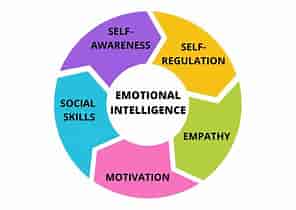Procurement Best Practices – 8 Ways To Streamline Purchasing
How well procurement functions in your organization depends on how you weed out inefficiencies and combat potential bottlenecks in your procurement system.
Here are the most impactful ways to reinvigorate your procurement cycle to guarantee sustainable procurement practices that run smoothly.
1. Automate Procurement Processes
Procurement is one of your core business activities, as it affects almost every aspect of your company’s operations and profit margins. Yet, so often, purchasing teams have to work with outdated processes and tools.
There are three main reasons to automate procurement:
- To save time: Think of all those hours your team spends on processing purchase orders, data entry, approval follow-ups, invoice follow-ups, and more. Not only do 42% of business leaders agree that automation can speed up repetitive task completion, but 54% of employees agree that automating menial tasks could save them up to 240 hours per year.
- To reduce human error: Automation will also reduce the potential for mistakes, even simple ones like miscalculated dollar amounts or mis-entered order numbers. In fact, half of all business leaders and employees agree that automation cuts back on manual errors.
- To decrease processing costs: CPOs say that cost-effectiveness is a top benefit of the digital procurement processes and 31% of business leaders say business process automation reduces labor costs.
2. Have Well-Defined Processes
Processes should be efficient and create operational efficiency.
The problem is that inefficiency commonly occurs because the company lacks clearly defined processes.
Without well-defined processes, teams can’t be sure which tasks are essential at any given time or what actions to prioritize to complete the work.
Plus, employees may struggle to streamline communications and manage project delivery between various stakeholders.
Most damagingly, poorly defined processes lead to chaotic operations.
While things still get done with inefficient processes, you’re likely to incur notably higher costs in terms of money, efficiency, productivity, morale, etc.
Without clear procurement processes, duplicated requests amass unnecessary costs, while poor record-keeping results in lost time, delays, and other delivery disruptions.
3. Practice Process Transparency
27% of organizations say that increasing transparency in the supply chain is the most effective way to prevent disruptions and bottlenecks in procurement.
Transparency in procurement means giving all process stakeholders access to the relevant documentation and information to help them complete their respective parts seamlessly.
Currently, only 50% of procurement leaders have high or very high visibility into their tier one suppliers. However, the benefits of transparency are clear: organizations with higher visibility were thriving better than those with less.
The benefits of transparency include:
- Faster processing – When everyone knows what they need to do and what standards or processes they must abide by, fewer bottlenecks happen.
- Cost reductions – Transparent procurement reduces costs by eliminating wasted time on long back-and-forth email chains and confusing requests. Instead, stakeholders can see exactly what they need to do at what time.
- Accountability – Transparency in documentation holds both you and your vendors accountable for each stage of the procurement journey.
- Responsible sourcing practices – Fully transparent processes help companies source products and services more responsibly, abiding by their corporate social responsibility.
To improve transparency, 47% of procurement professionals are considering new tools or applications.
Procurement automation software like frevvo can help achieve better transparency thanks to automated record-keeping.
4. Have a Centralized Contract and Documentation Hub
22% of companies are worried about contract complications within the supply chain because inconsistencies across contracts, challenges with contract management, and contract errors cause delays.
Most contract issues are a result of one simple problem: not having a centralized destination where employees can find, access, and retrieve contracts and other necessary documentation.
Having all documentation — from operational processes to contract templates — in a single, easily accessible location ensures:
- Consistency of contracts and communications
- Fewer errors
- Less time wasted dealing with remedial work
Consider building a centralized hub for your contract templates, as well as recent versions of your most commonly-used contracts.
You can use simple solutions like a template repository within Google Docs or a dedicated contract management software.
5. Use Data to Optimize Inventory
Optimizing inventory is vital since inventory carrying costs can be enormous. Logistics experts place it at 18% to 75% per year, depending on the business type.
Given the constant push to cut costs and streamline spending, ensuring optimal stock levels is a prime focus. Too much stock, and you’re paying excess logistics fees. Not enough stock, and you won’t meet customer demands/.
That’s where turning to data-driven insights comes in.
Leverage advanced insights and the power of AI to determine optimal inventory levels at any given time and predict the company’s needs for stock into the future.
Right now, 39% of procurement professionals are looking to operational analytics to better track business metrics and indicators, while nearly 50% of organizations are looking at tools or applications that improve supply chain tracking.
Plus, one in 10 organizations is using AI to streamline logistics, while a further one in 10 is using it to optimize inventory management.
While the process involves implementing additional technological solutions, data gathered in the process will help you accurately predict demand, avoiding either overstocking or undersupplying an item.
6. Have a Multi-Sourcing Strategy
It’s not smart to rely on one supplier for any element of your supply chain. If you’re only buying goods from one vendor, you risk delays and bottlenecks if that supplier fails to produce these goods on time.
You’ll also run into delays if you have problems with supplier management and the relationship breaks down. If you’ve only got one supplier in the pipeline, you won’t be able to produce your end results until you’ve located a replacement vendor.
This is why 39% of organizations are multi-sourcing products. It reduces their reliance on one supplier, creating resilience in their procurement systems.
Not only that, but you should also consider selecting suppliers from different geographical regions. Uncontrollable variables such as war, pandemic, geopolitical problems, and climate issues can wipe out suppliers in a whole region.
To handle this potential pitfall, 30% of organizations are planning to diversify their supply chains among multiple geographies. That way, they won’t be blindsided by a regional event that knocks manufacturing out of action.
7. Build Strong Supplier Relationships
47% of organizations believe that strengthening supplier relationships is the best way to reduce supply chain disruptions and bottlenecks.
This is because top-notch supplier management increases transparency between you and the vendor so that both parties are aware of what’s happening on each end.
The supplier will let you know of issues and changes ahead of time, and you’ll keep them informed on process alterations or payment problems.
This means you can deal with potential bottlenecks early before they become crisis points. That’s why over half of organizations are boosting their supplier communication strategy. It enables them to identify potential disruptions early.
Not only that, but strong communication helps you to mediate any issues that may arise before the relationship turns sour.
You may also find that a good working relationship with your supplier puts you at the front of the queue. If your supplier is struggling to accommodate all their buyers, they’re more likely to help buyers that they work well with. Make sure that’s you by building firm relationships.
8. Train Your Procurement Team
According to a recent report by Deloitte, “The overall effectiveness of teams and their ability to sustainably deliver on the organization’s biggest priorities, such as cost and risk management, requires CPOs to build and deploy effective talent strategies.”
In this sense, it’s up to your organization’s procurement leader to ensure that your procurement team is up to snuff on all policies and processes.
A well-trained team is far better equipped to carry out processes effectively and efficiently. Plus, they’ll be in a better position to identify and deal with obstacles that arise before they get out of hand.





Leave a Reply